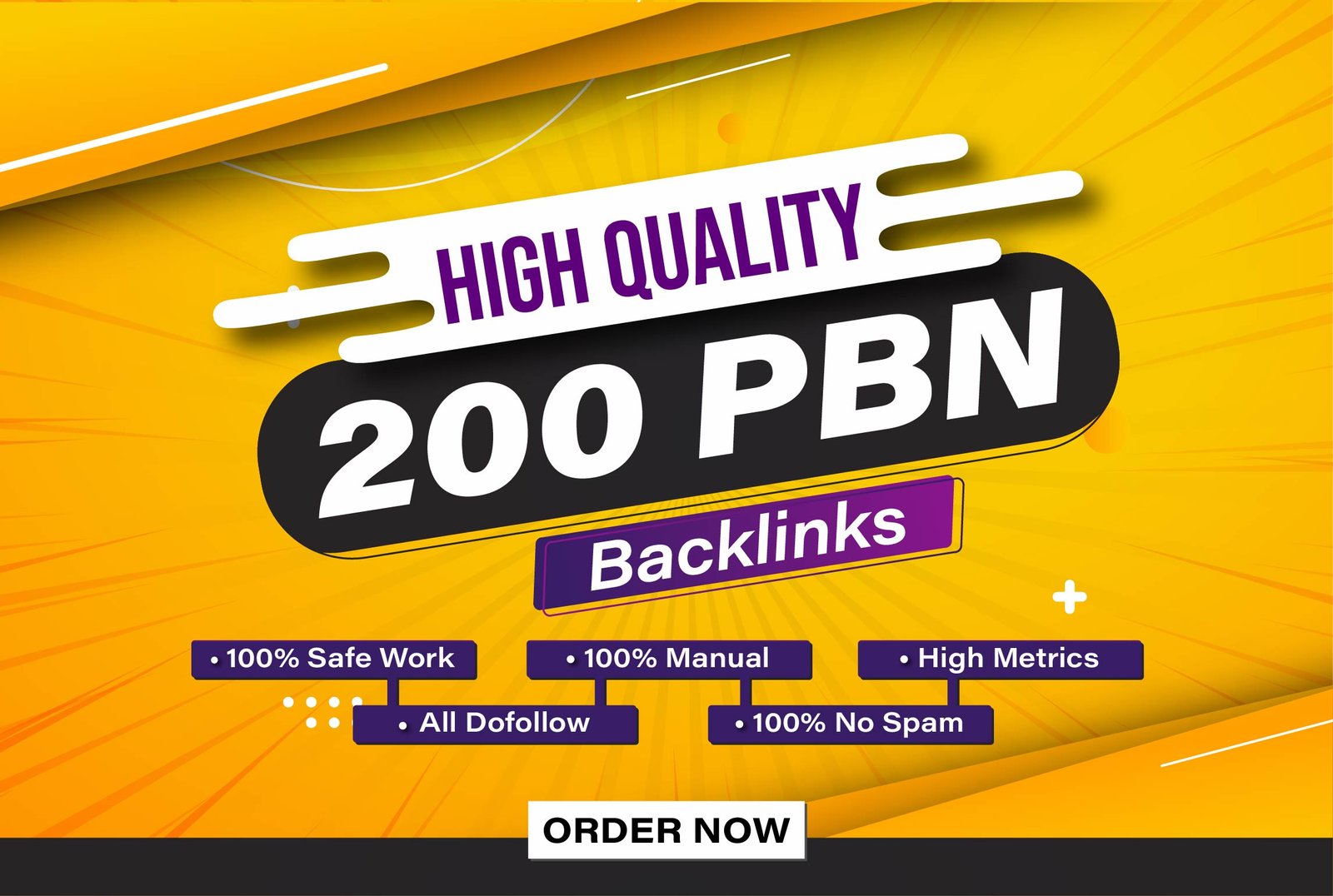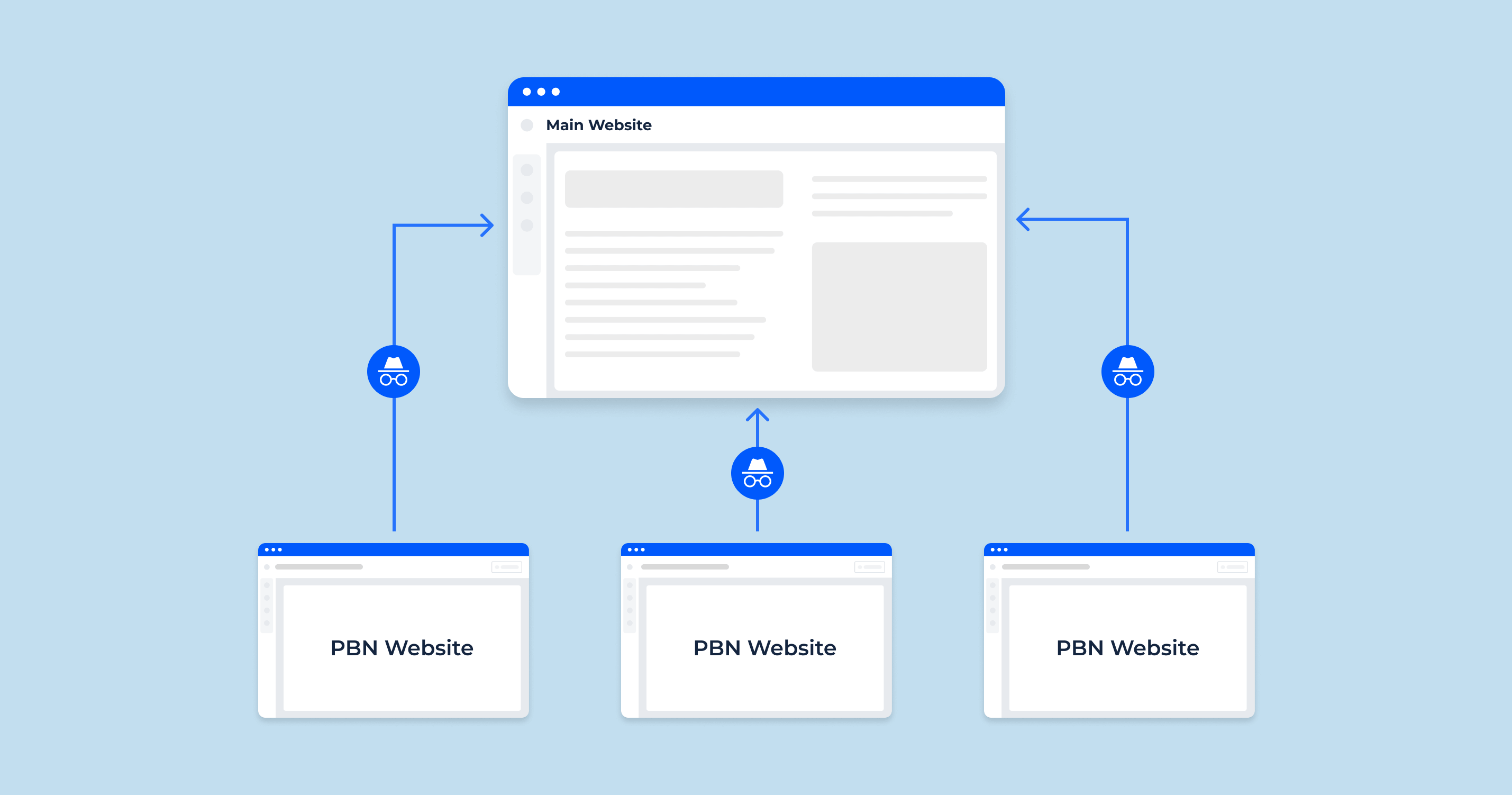
In the world of search engine optimization (SEO), backlinks remain one of the most powerful ranking factors. For years, SEO professionals have been experimenting with different link-building strategies to climb to the top of Google search results. One such method is the use of PBN backlinks — links that come from Private Blog Networks.
While some marketers swear by them for quick ranking results, others warn against their risks. In this article, we’ll break down what PBN backlinks are, how they work, their pros and cons, and whether they’re still worth using in 2025.
What Are PBN Backlinks?

A PBN (Private Blog Network) is a group of websites owned by a single person or company, created primarily for the purpose of building backlinks to another website. These websites are often made to look like independent, high-quality sites, but their main goal is to pass link equity and improve search rankings for the target site.
PBN backlinks are simply the links you get from these PBN websites.
Here’s how it works:
-
An SEO buys expired domains with existing authority, backlinks, and history.
-
These domains are rebuilt into websites with relevant content.
-
The owner uses these sites to create links pointing to their “money site” (the main site they want to rank).
-
The search engines see these links as “votes of confidence,” potentially boosting the money site’s rankings.
Why PBN Backlinks Became Popular
The popularity of PBNs skyrocketed in the mid-2010s when Google’s algorithm heavily rewarded backlink quantity and quality. Instead of relying on outreach or waiting for organic backlinks, SEOs discovered they could control the backlink source by owning multiple sites.
This allowed them to build links on demand, control anchor text, choose link placement, and avoid dependence on other webmasters.
Because these sites already had authority from their previous life (before being bought), the backlinks often passed significant SEO value — sometimes resulting in ranking jumps within weeks.
How PBN Backlinks Work in SEO
Search engines like Google use backlinks as a signal of trust and relevance. If an authoritative website links to yours, Google assumes your site is valuable.
With PBN backlinks, authority from the expired domain’s existing backlinks transfers to the money site. The owner can choose exact-match keywords for anchor text, giving faster ranking improvements. And since you own the site, you can place links within highly relevant content for better SEO impact.
However, while this sounds appealing, it’s important to note that Google’s Webmaster Guidelines strictly forbid manipulative link schemes — and PBNs fall into this category.
The Advantages of PBN Backlinks
Despite the risks, many SEOs still use PBN backlinks because of their potential benefits.
Faster Ranking Improvements – You can control the site’s authority, anchor text, and linking pattern, which can lead to quicker results compared to traditional methods.
Full Control Over Links – Unlike guest posting or organic link acquisition, PBN owners don’t depend on third parties to publish their links.
Scalability – Once a PBN is set up, it can be used for multiple projects, clients, or niches.
Niche Relevance – By buying expired domains in your niche, you can build highly relevant backlinks that boost topical authority.
The Disadvantages and Risks of PBN Backlinks
While the benefits are tempting, there are serious drawbacks to using PBNs.
High Risk of Penalties – Google actively targets PBNs. If detected, your site could face ranking drops or even deindexing.
Costly to Maintain – Buying expired domains with good metrics is expensive, and each site needs hosting, unique content, and ongoing management.
Time-Consuming – Building and maintaining a network of realistic-looking sites requires significant effort.
No Long-Term Guarantee – Even if your rankings improve quickly, they can vanish overnight if the network is flagged.
How to Build a PBN (For Educational Purposes Only)
While we don’t recommend building a PBN, here’s how SEOs typically set one up so you understand the process.
-
Domain Acquisition – Purchase expired or auctioned domains with a clean backlink profile and high authority.
-
Hosting Diversity – Host each site on a separate IP address to avoid footprints.
-
Content Creation – Publish unique, high-quality articles to make the site look genuine.
-
Link Placement – Add contextual backlinks to the money site within the content.
-
Maintenance – Keep the sites updated with fresh posts to maintain credibility.
How to Detect a PBN
If you want to avoid risky backlinks, you should know how to identify a PBN. Warning signs include:
-
Multiple sites hosted on the same IP or hosting provider.
-
Similar website themes, layouts, or plugins.
-
Low traffic despite high authority metrics.
-
Outdated or irrelevant content.
-
Suspicious outbound link patterns to unrelated sites.
Are PBN Backlinks Still Effective in 2025?
Yes — but with a big disclaimer. PBN backlinks can still move rankings, but the risks are higher than ever. Google’s algorithms and manual review teams have become more sophisticated at detecting unnatural link networks.
If you’re working on a short-term project or are willing to accept the risk of penalties, PBNs might give you a quick win. However, for sustainable, long-term SEO, white-hat strategies such as guest posting, content marketing, and digital PR are far safer.
Safer Alternatives to PBN Backlinks

If you want the ranking benefits of backlinks without the risks, consider:
-
Guest Blogging – Writing quality content for reputable sites in your niche.
-
HARO (Help a Reporter Out) – Providing expert quotes for journalists in exchange for a backlink.
-
Broken Link Building – Finding broken links on other sites and suggesting your content as a replacement.
-
Linkable Assets – Creating in-depth guides, research, or tools that naturally attract links.
Final Thoughts
PBN backlinks are one of the most debated link-building tactics in SEO. They offer full control and fast results, but they also carry a significant risk of penalties if detected. In 2025, they still work — but whether you should use them depends on your risk tolerance, budget, and long-term goals.
If you’re building a brand for the long haul, investing in legitimate, white-hat SEO techniques is the smarter choice. If you’re testing a new niche site and are prepared for possible penalties, PBN backlinks might still have a place in your toolkit.
Ultimately, understanding how PBN backlinks work — and their potential consequences — will help you make an informed decision in your SEO strategy.






